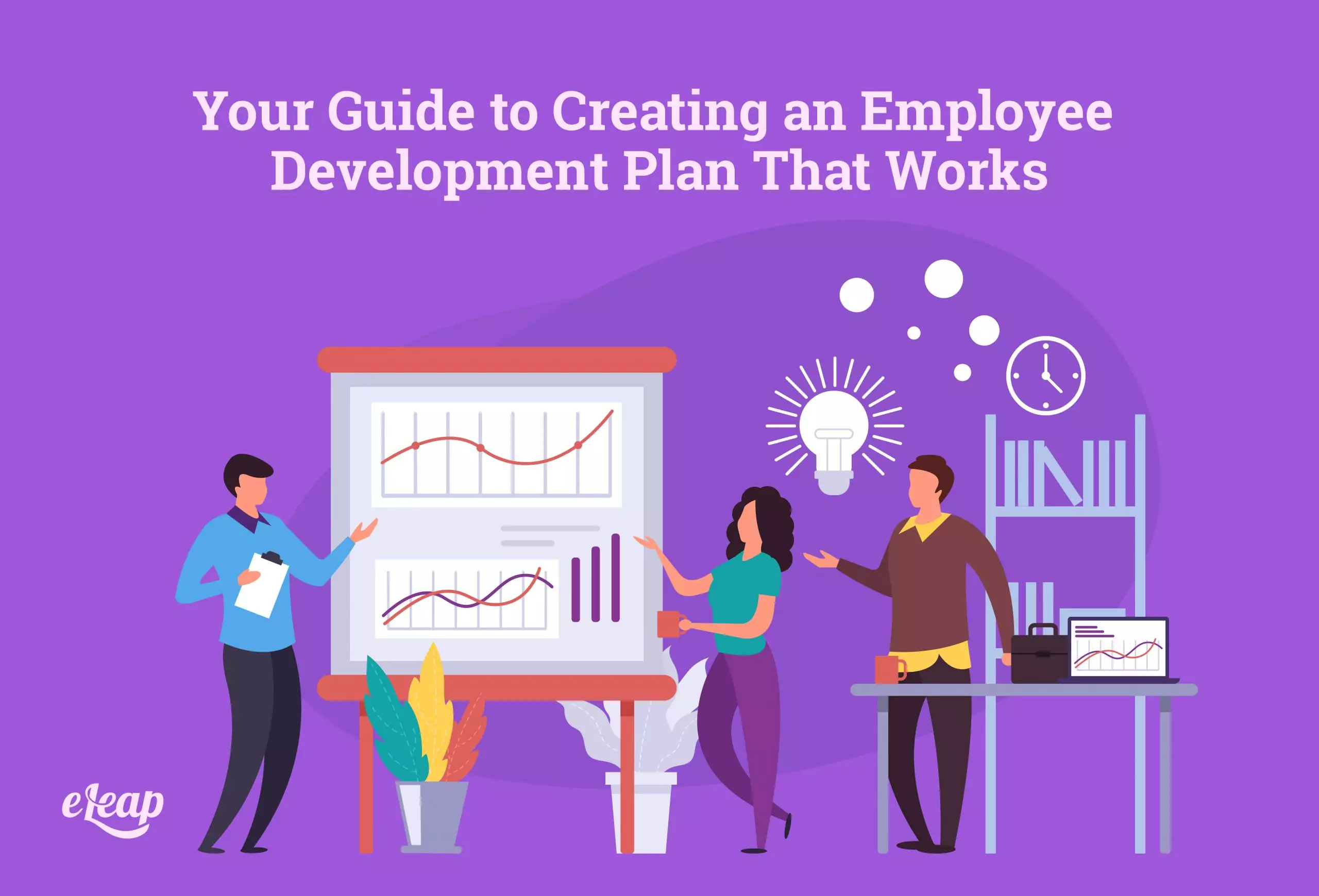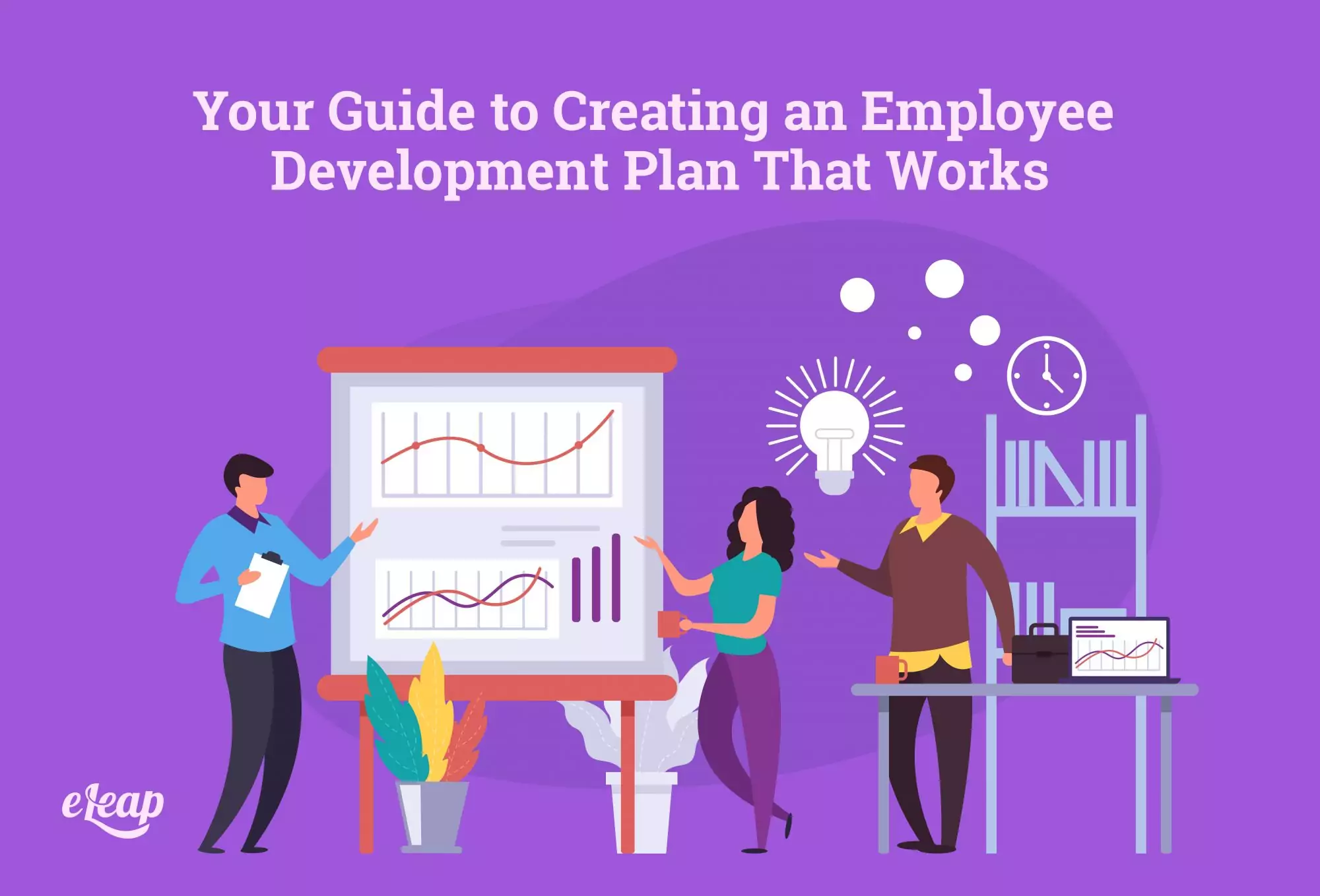Your Guide to Creating an Employee Development Plan That Works

An effective employee development plan prepare employees for unforeseen situations. It has great significance when it comes to the success of an organization. Once, employees came to work with a specific skill set and they might have remained at that level for much of their career. Today, things are different. Employers (and employees) demand more dynamism in the relationship.

This is exemplified in many ways. For instance, today’s employees expect their employers to provide them with development and learning opportunities. Employers have come to value the benefits of employee up-skilling, which allows them to close skills gaps and promote from within, thereby reducing costs and improving stability.
Of course, providing those opportunities is not as simple as you might think. Successfully up-skilling employees will require that you create employee development plans, but not all plans are created equal. In many instances, you may spend time and effort creating a plan only to have it fall apart in the end.
In this article, we will help you address this problem. We will cover how to create employee development plans that work, and ensure that you understand everything necessary to do so.
Why Do They Matter?
First, why does an employee development plan matter in the first place? Isn’t it enough to informally take the pulse of employee interests and then rough out a path forward? That might work in some cases, but in many others, it will not.
There are many benefits to having a defined, codified path forward, one of which is an increase in certainty and confidence for the employee. Another is that HR and trainers can use the plan to assess progress, determine the effectiveness of training, address shortcomings, and so much more. So, development plans are not optional – they should be considered mandatory.
Base Everything on Business Goals
Before you develop the first plan objective, you must align everything with your business goals. All development should tie in with business goals in some way. This ensures that both the organization and the employee see the value.
Note that the business goals here can be short or long-term. For instance, do you need someone in the accounting department to master a new software that will yield improved performance for their responsibilities or the department as a whole? That is a great example of a relevant short-term goal (with mid and long-term repercussions, of course). However, on the other hand, you may want to eventually move a high-performing sales team member up to a district management position. That’s a long-term goal.
So, what do you need to accomplish? Define that first, and then connect everything else to that point. If you fail to do so, the path of development may fail to provide measurable value to the company.
Know Your Employees
It’s tempting to think that you know your team members well and can anticipate their career plans. However, that is the wrong path to take. Never assume that you know what your employees aspire to in their careers – your business could be a stopping point on a larger career arc that takes them far beyond what you might assume they want.
When it comes to creating an employee development plan, you need to speak with your team members. Let them know what you’re thinking about in terms of development and career path for them. Get their input and buy-in before doing anything else. It would be a tremendous waste of time and resources to create a plan only to have it fall apart because you incorrectly assumed that an employee would be interested.
Working with your employees is also important because it allows you to tie in their existing development goals. You may find that your rising star salesperson actually wants to transition to the marketing team, or that someone in accounting really wants to move to IT where her tech skills and interests will make her a more valuable asset.
For more information on Employee Development click here.
Take a Hard Look at the Business and the Industry
An employee development plan should not just focus on how things stand right now. It should also enable you to move forward into the future. A reactive stance does not enable a business to become an innovator and pioneer. You get around that by considering ways that your business is growing and how your industry is changing now and how it will continue changing in the future.
Know the Different Delivery Formats
Once you have identified business goals and connected the dots with employees interested in the development opportunity, as well as identified key skills necessary, it’s time to start mapping out the training. Here, you must fit the learning opportunities to the training type and delivery method. Today, we have access to an incredible range of training delivery options, but they may not all be suitable.
For example, suppose you want to provide leadership training for a promising employee who you eventually want to move up to a management position. That individual’s training might consist of mentorships and cross-training, job shadowing, and other forms of OJT, combined with leadership modules completed via your learning management system.
Now, contrast that with how you might go about improving an employee’s existing skillset – say improving department productivity by training an accounting team member to use a more advanced software suite. Here, you might provide on-the-job training, micro-learning opportunities, tutorials, and the like.
Track and Monitor
By this point, your development plan should be pretty fleshed out. However, you need to build in tracking, monitoring, and feedback. Your LMS should provide you with the ability to track and monitor the learning path, giving you access to what your learner has completed, when, their accuracy in answering quiz questions, time spent on specific modules, and more. Still, you need to also pause development periodically and get feedback from the employee. How is training going? Do they have suggestions? Do they feel that they can apply the learning?
A Well-Developed Workforce
An employee development plan provides many benefits. With the information we’ve covered, you should be on your way to creating accurate but flexible plans that work for you and your team members. With time and patience, you can create a well-developed workforce that drives business growth and success.